University of Connecticut, August 3rd, 2017
Organizers: Luke Rogers, Phanuel Mariano, and Gamal Mograby
Participating Schools: Amherst, Smith, UConn and UMass
5th Mini-Symposium full program (2017)
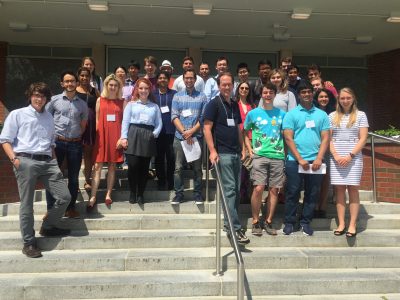
5th Mini-Symposium full program (2017)


Luke Brown, Giovanni E Ferrer Suarez, Karuna Sangam.
Gamal Mograby, Dan Kelleher, Luke Rogers, Sasha Teplyaev.
Laplacians have been well studied on post-critically finite (PCF) fractals. However, less is known about gradients on such fractals. Building on work by Teplyaev, we generalize results regarding the existence and continuity of the gradient on the standard Sierpinski Gasket to higher dimensional Sierpinski Gaskets. In particular, we find that, for functions with a continuous Laplacian, the gradient must be defined almost everywhere, and specify a set of points for which it is defined. Furthermore, we provide a counterexample on higher-dimensional Sierpinski gaskets where the Laplacian is continuous but the gradient is not defined everywhere. We conjecture that Hölder continuity of the Laplacian is a condition strong enough to guarantee that the gradient exists at each point.

Lowen Peng, Anthony Sisti, Rajeshwari Majumdar
Phanuel Mariano, Masha Gordina, Sasha Teplyaev, Ambar Sengupta, Hugo Panzo
We study the Law of Large Numbers (LLN) and and Central Limit Theorems (CLT) for products of random matrices. The limit of the multiplicative LLN is called the Lyapunov exponent. We perturb the random matrices with a parameter and we look to find the dependence of the the Lyapunov exponent on this parameter. We also study the variance related to the multiplicative CLT. We prove and conjecture asymptotics of various parameter dependent plots.
Raji Majumdar and Anthony Sisti, will present posters Applications of Multiplicative LLN and CLT for Random Matrices and Black Scholes using the Central Limit Theorem on Friday, January 12 at the MAA Student Poster Session, and give talks on Saturday, January 13 at the AMS Contributed Paper Session on Research in Applied Mathematics by Undergraduate and Post-Baccalaureate Students.
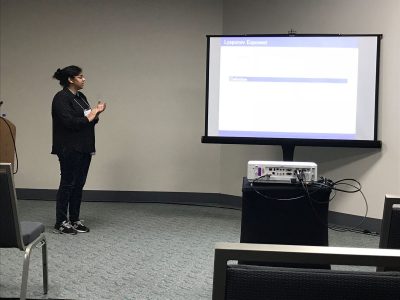
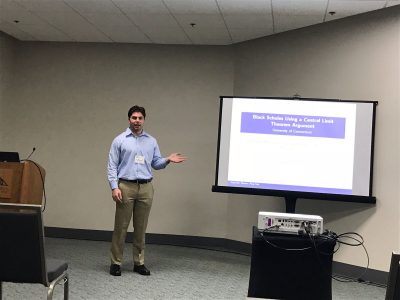
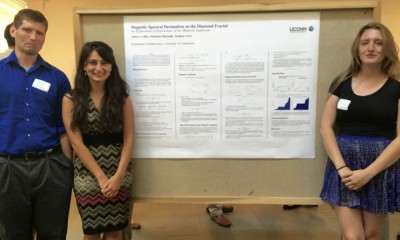
Stephen Loew, Madeline Hansalik, Aubrey Coffey
The diamond fractal is a fractal that is obtained in the following manner. Start with a graph with two vertices and an edge and replace the edge with two new vertices connected to our original vertices to obtain a diamond shaped graph. The diamond fractal is defined to be the limiting object after continuing with the edge replacement indefinitely. In the project, the spectrum of magnetic Laplacian operators on graph approximations to the diamond fractal was computed.
Given a level n approximation to the fractal with known magnetic field strengths through cells and holes, it is possible to determine the net magnetic field through the cells and holes of the preceding graph approximations. The spectral similarity relation between the operators on successive graph approximations was worked out, with the corresponding spectral decimation polynomial depending on the magnetic field strengths. A poster and talk on this work was presented at the REU Mini-Symposium at UConn.
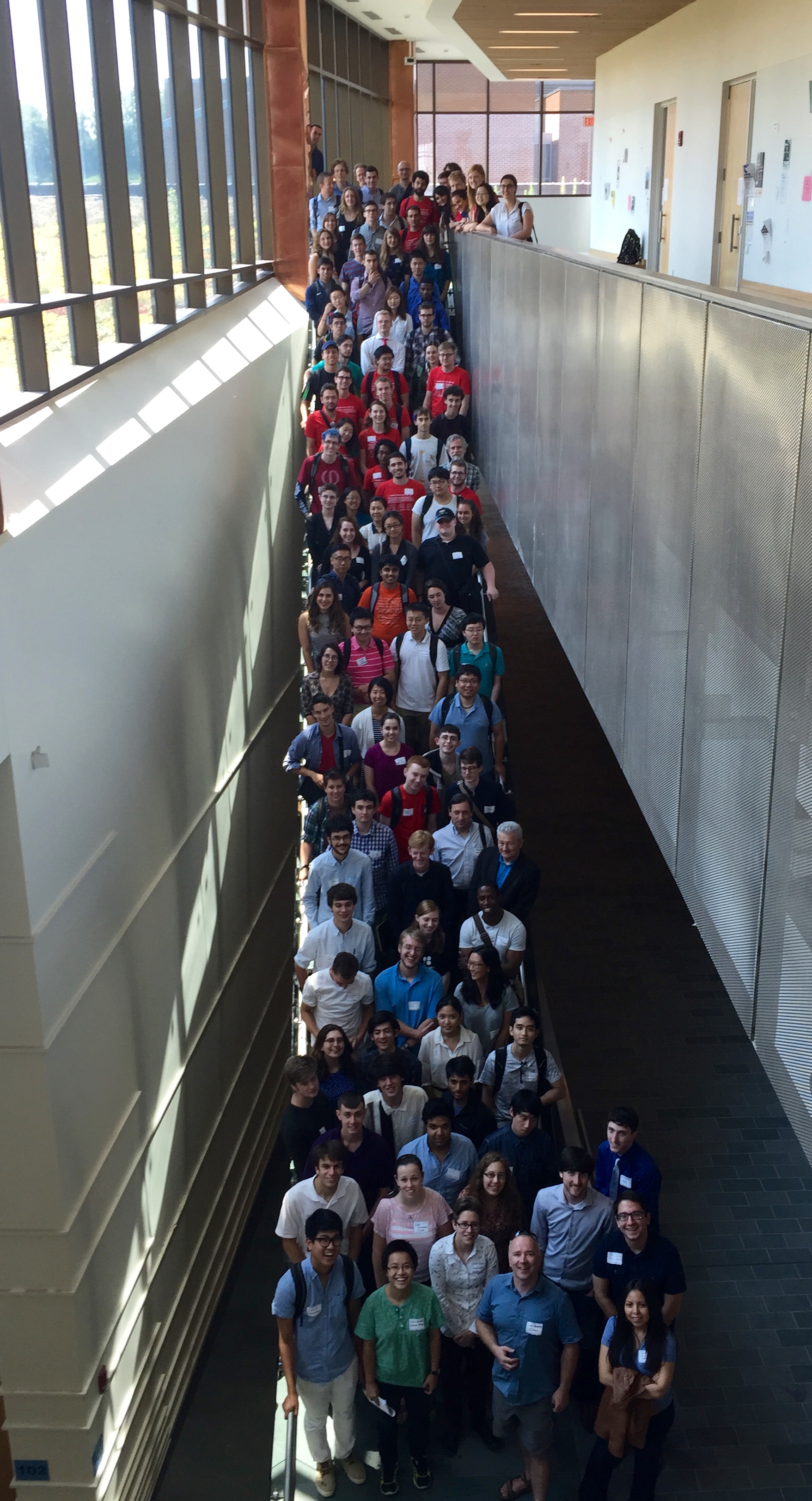
(photo courtesy Megan Brunner)
Mini-Symposium poster